[ad_1]
As marketers settle into 2023, LinkedIn is one hugely popular professional networking community you can’t afford to ignore.
More than 57 million companies and their C-suite executives are active on LinkedIn. Well-thought-out LinkedIn marketing strategies can grow your business by driving traffic, generating quality leads, and fostering long-term relationships with your prospects.
In this article, we’ve put together a list of top LinkedIn marketing strategies with real-life examples of each strategy. Understanding this can help you leverage LinkedIn to boost your brand growth.
These strategies have helped B2B marketers across various industry verticals access their target customers and influence their purchasing decisions.
What is LinkedIn Marketing?
LinkedIn marketing is the process of leveraging the platform’s wide reach to create and build brand awareness, forge new business relationships, share content, nurture qualified leads, and participate in industry discussions.
LinkedIn is an ideal platform for both individuals and companies to engage with their target audience, arouse interest in its product or services, and turn qualified leads into customers.
Incorporating LinkedIn in your business marketing efforts gives you access to a range of features like:
- InMail Messages: This premium feature allows you to send a direct message to another LinkedIn user you are not connected with.
- Profile views: This feature allows you to see who has checked your LinkedIn profile – their names, interesting views, job roles, organizations they work in, and where they found your profile.
- Advanced search filters: Using this feature, you can find exactly what you’re looking for. You can narrow your search down by people, posts, jobs, and more.
- Saved leads and accounts: This feature helps you to save your search criteria, including keyword strings and filter refinements, so you can quickly run that search again at any time.
- Saved search alerts: You can set saved search alerts and get automatically notified when new members or existing members with recently updated profiles match your search criteria.
- Showcase pages: You can target different consumer segments with Showcase Pages based on interest, preferences, etc.
Why Do LinkedIn Marketing Strategies Matter to Marketers?
If you’re still unclear on whether or not to use LinkedIn marketing for your business, you need to understand the importance of this professional networking platform.
While using other popular social media platforms, like Facebook, Instagram, YouTube, and Twitter, is great for reaching out to your potential customers, LinkedIn has a unique audience. The platform is focused purely on professionals. LinkedIn users are there to network, learn about their industry, and meet other professionals.
It’s also an enormous platform. Although, the sheer volume of LinkedIn users is not the sole reason why it’s considered a popular marketing platform for businesses from any industry.
Here’s why this popular professional platform matters BIG time to marketers.
- It can help you display thought leadership
- Connects your brand to your target audience
- Helps generate brand awareness
- Increase product and service awareness
- Effective recruitment tool
Who Should Use LinkedIn for Marketing?
Do you know that LinkedIn has over 774 million users across the globe? This massive user base alone makes this professional platform among the top social networks today.
Is your business leveraging LinkedIn to create brand awareness, build a professional network, generate leads and conversions, and boost revenue? As a marketing tool with huge potential, LinkedIn is ideal for:
- Small, medium, and large B2B companies looking to promote their brands by reaching professionals through highly targeted ad campaigns.
- A business owner or entrepreneur who is looking to utilize LinkedIn for additional revenue sources by building, maintaining, and updating their company page.
- B2B marketers can use LinkedIn to build relationships, establish thought leadership, generate leads, conduct market research, improve reputation, and build online communities.
Successful LinkedIn Marketing Strategies to Implement in 2023
LinkedIn offers many ways of boosting your business image and driving more sales.
Here are some of the most effective LinkedIn marketing strategies you can implement for your business.
1. Optimize Your LinkedIn Profile
Besides compelling text, people are heavily influenced by appealing images in advertising and promotion campaigns.
That’s why you see more engagement in LinkedIn posts with images as compared to those without them.
Quality LinkedIn profile pictures can attract, persuade, and sell. One look at your profile image and description, and the audience should have a clear understanding of what your business is all about.
There’s no rulebook to choosing an ideal LinkedIn feature image, but here are a few tips:
- Simple and neat feature image
- Description should be concise
- Should mention the address, the number of followers, and employees
- Should include links to the business website, jobs, events, etc.
2. Use Hashtags
Have a look at highly engaging posts of popular LinkedIn influencers, and you’ll notice a few hashtags. Are you wondering what their significance is to business marketing strategies?
Simply put, trending and relevant hashtags allow users to find content revolving around the niches they are most interested in.
When you are creating a post, LinkedIn automatically suggests the most relevant hashtags. You can also find your own hashtags by using the hashtag symbol (#) followed by your chosen letters or numbers will create that hashtag for you on LinkedIn.
Using hashtags will make your post more searchable for people following the hashtags you’ve used.
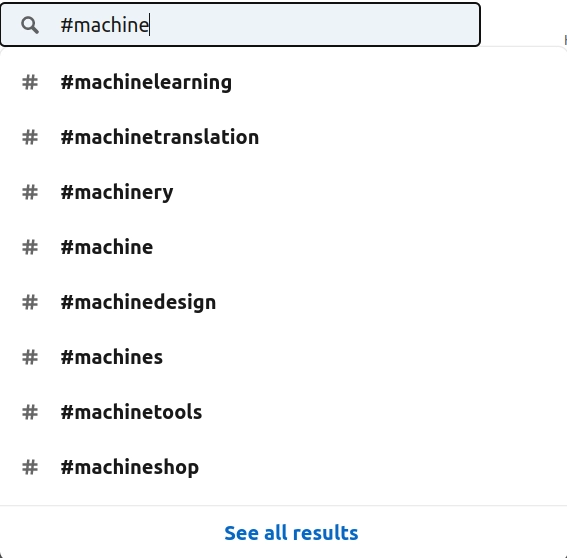
3. Connect With Influencers and Industry Leaders
Influencer marketing is big across various social media platforms, like Instagram, Twitter, YouTube, and now LinkedIn. Connect with influencers in your industry whose posts attract high engagement among their followers.
Since industry leaders and influencers have a reasonable number of followers, you can leverage their wide outreach and expertise to spread the word about your brand and connect with your audience.
4. Define Your Target Audience
You need to identify the people whom you want to connect with. Define who your target audience is – their demographics, industries, interests, and designations.
The audience targeting capabilities in LinkedIn is advanced, and small businesses can exactly target the audience that is likely to buy their product or service.
For example, the reference images displayed below show that when performing regular searches, marketers can target their audience by defining the location, industry, and company size.
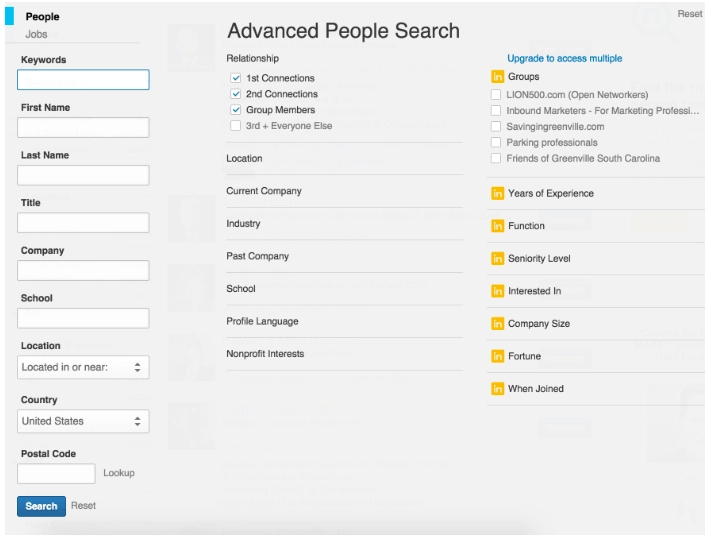
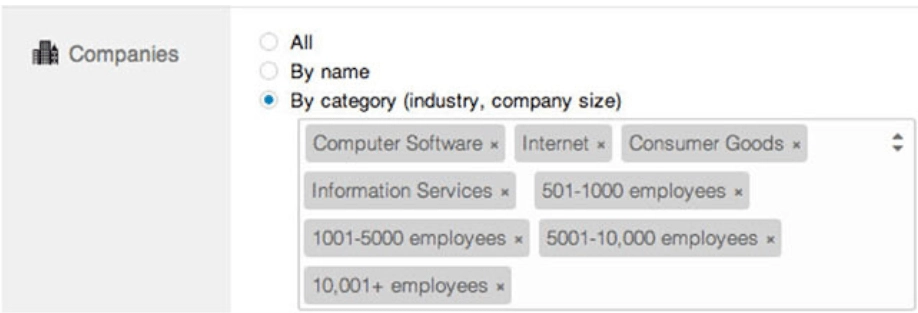
5. Stay in Touch With Your Prospects
Stay on your customers’ radar on LinkedIn. It’s possible that you have an in-house marketing team or outsourced this work to a marketing agency.
Whatever the case, you should waste no time in staying in touch with leads who have shown some kind of interest in your product or service.
You can continue engaging with your prospects by posting frequent blog posts and daily status updates on your company’s LinkedIn account.
Generally, posting once per day is recommended.
Also, marketers can use LinkedIn to build and grow new email lists and start turning their connections into leads and sales for their business. In your targeted emails, you should offer relevant content to your connections through a series of emails prior to promoting your call to action.
These emails could include a link to an article (relevant to recipients and their respective industries), sharing business tips or strategies, or a download to your whitepaper.
6. Leverage LinkedIn Groups
Joining LinkedIn groups that are relevant to your small business’s target demographic is one of the most effective ways to stay tuned with your audience’s views and thoughts on diverse topics. Also, business owners can utilize the platform to offer their advice or interact with other group members.
More importantly, you can individually message the members of the group even if they are not connected to you. You can use LinkedIn’s Inmail feature to make new connections though you need to be a premium member to leverage this feature.
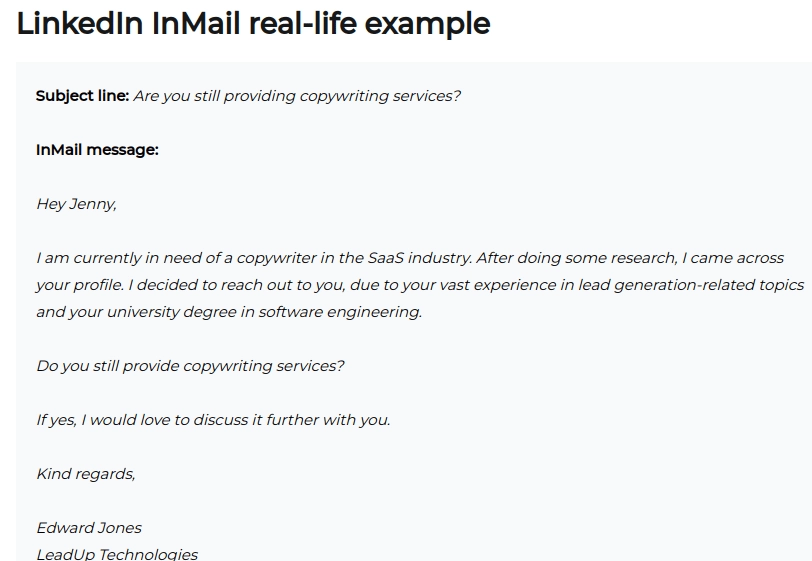
7. Publish Engaging Content Consistently
Posting relevant and engaging content is a prerequisite for gaining traction among target audiences on LinkedIn. You need to continuously create content that is insightful and original, as it is the doorway that leads your potential to your website and further influences them to browse and purchase your product or services.
Whether you’re posting a blog or regular LinkedIn feed posts, do not miss out on adding visually appealing images and relevant statistics to arouse readers’ interest and make your content more credible. Of late, video content has gained significant traction among users and is known to be the most popular type of content on LinkedIn.
Also, it’s important to publish engaging content consistently that establishes you as a thought leader in your particular industry.
You can also use a good content calendar or LinkedIn post scheduler to schedule and publish content across diverse social media platforms, including LinkedIn.
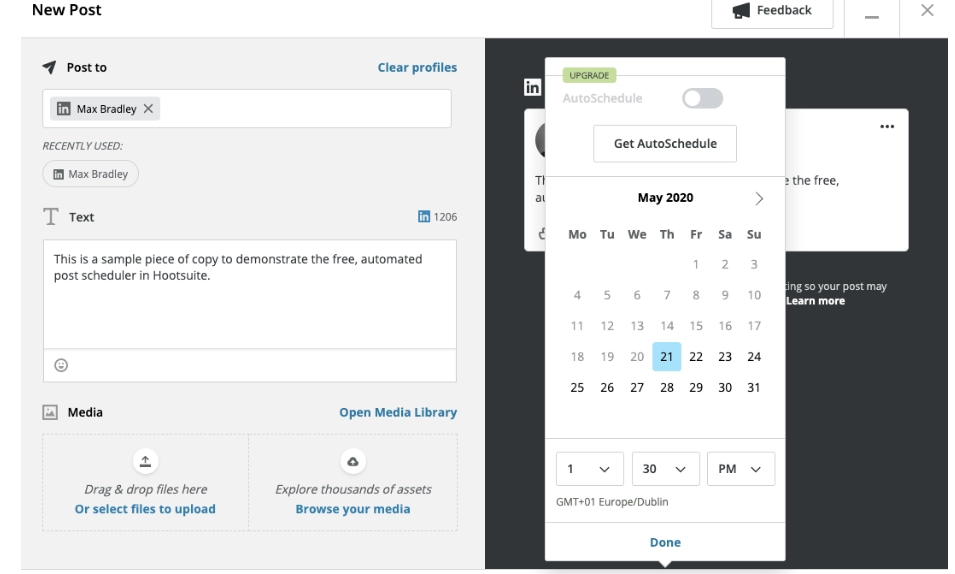
8. Collect and Analyze Data
LinkedIn marketing is a numbers game. Though you can create and publish just about any type of content on LinkedIn, regular assessment of your content performance is important to identify your top-performing as well as low-performing content.
Marketers and content creators can use LinkedIn Analytics to get useful insights regarding their audience’s preferences and the type of content they engage with most. This tool is free, and you can easily access your company profile’s dashboard, where you will find basic metrics like the number of your page’s unique visitors, post impressions, followers, and custom button clicks (if you are using this option) from the last 30 days.
This tool helps you collect and analyze numbers in the following ways:
- Which posts are earning high engagement
- Who are your most regular visitors or commenters
- What are the top profiles and geographies you’re engaging with
- What is your company’s page performance as compared to your competitors
- How your employees impact your business’s reach and engagement
- If your LinkedIn content is generating traffic and leads
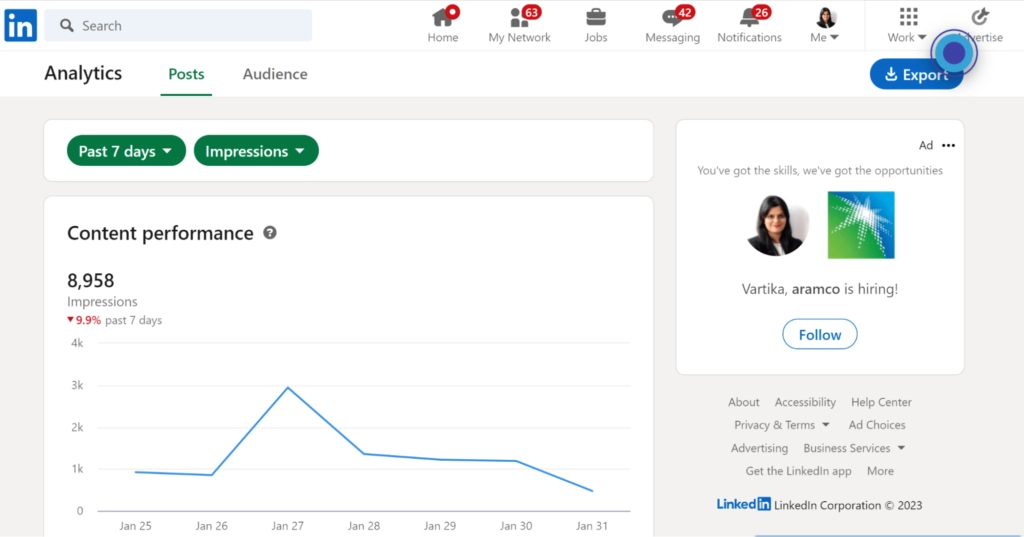
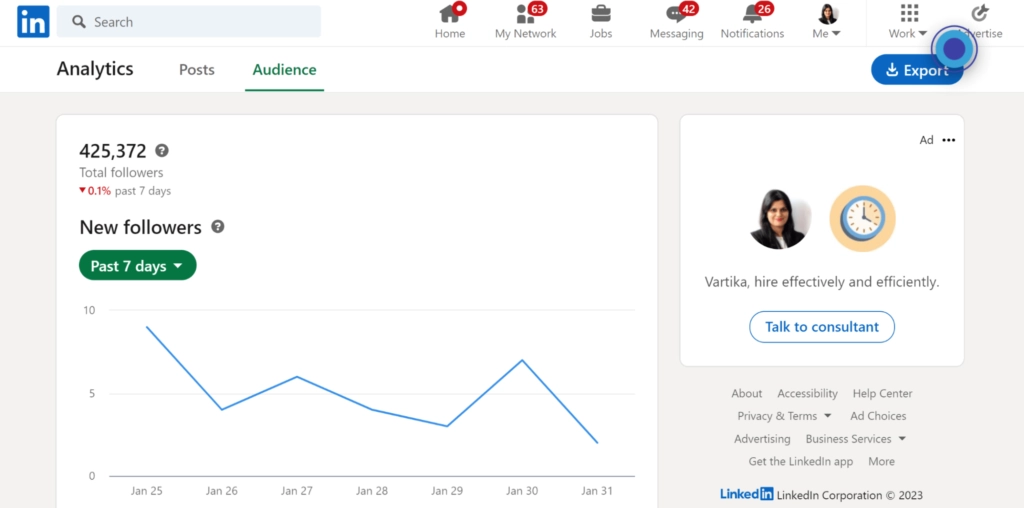
9. Try LinkedIn Ads
Linkedin Ads is a powerful marketing tool that helps businesses with lead generation, online recognition, content sharing, and more. Using this feature, businesses of any size from any industry can target the right audience through high-impact ads.
The most important benefit of LinkedIn Ads is that it helps businesses reach specific business-related goals faster and easier. The different types of LinkedIn Ads are:
- Text and Display Ads
- Sponsored Content
- Premium Display Advertising
- InMail Ads
- Follow Company Ads
Here are some useful tips to help you create appealing and engaging ads for your business.
- Convey your company’s expertise without using jargon.
- Target your ads by industry, job type, company, skills, groups people belong to, location, gender, and age.
- Add relevant, high-quality images to increase engagement.
- Create multiple ads per campaign so you can see which versions are performing best.
- Set daily budgets and place bids for your advertising campaigns.
- Monitor and periodically evaluate the performance of your ads by analyzing stats like click-through rates.
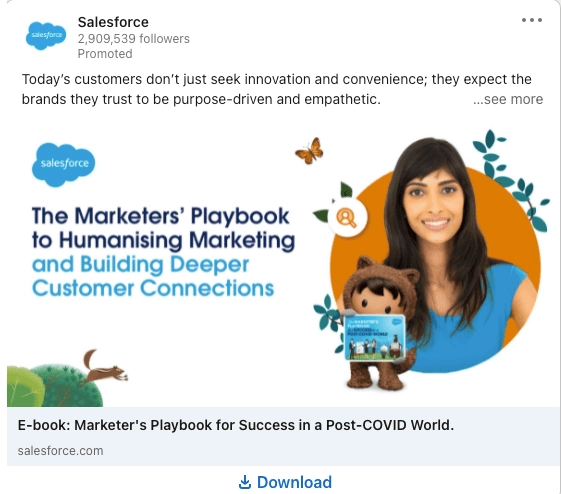
10. Use LinkedIn for Lead Generation
89% of B2B marketers use LinkedIn for lead generation. LinkedIn helps you connect with the right audience and report accurately on results. LinkedIn Automation tools automate your LinkedIn activity and help you generate new leads for your business.
You can import your contacts into a system, schedule messages, and track your responses. They let you connect with more people within your industry and also share your content with people who are likely to find it engaging.
Let’s take a look at some Pros and Cons of using LinkedIn for lead generation.
Pros:
- It’s possible to generate a significant amount of views, connections, and traffic without having to buy ads.
- LinkedIn allows you 30,000 first-degree connections, which means you can create a massive following.
- LinkedIn updates stay longer, which means you’ll see engagement on your posts even weeks after posting them.
Cons:
- You cannot reach younger audiences who are yet to start their career.
- LinkedIn advertising is expensive compared to other social media channels.
Final Thoughts
Consistency is key to getting the results you want from these marketing strategies. You should not take it as a one-and-done effort. Users browsing your LinkedIn page take note of how regularly your business is posting, so be consistent.
Implementing the best marketing strategies on your LinkedIn page will help your business gain traction with other users and earn their trust to try your product or services. Be consistent, post high-quality content, and engage with the right people.
Good luck!
guest
[ad_2]
Source link









